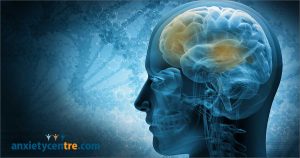Increase Brain Activity with Brief Exercise and Meditation
By John M. de Castro, Ph.D.
“Meditating for a few minutes might help rein in those wandering thoughts and help you stay focused throughout the day. But meditating can have an even bigger impact. Some studies show that it affects the brain in various ways, from changing the brain’s volume to decreasing activity in the parts of the brain responsible for stress.” – Lela Moore
Mindfulness training has been shown through extensive research to be effective in improving physical and psychological health and particularly with reducing the physical and psychological reactions to stress. There are a number of ways that meditation practices produce these benefits, including changes to the brain and physiology. The nervous system changes in response to how it is used and how it is stimulated in a process called neuroplasticity. Highly used areas grow in size, metabolism, and connectivity. Mindfulness practices in general are known to produce these kinds of changes in the structure and activity of the brain. One way to observe the effects of meditation on the nervous system is to measure changes in the functional near‐infrared spectroscopy (fNIRS), which measures blood flow to brain areas.
In today’s Research News article “Activation of the orbitofrontal cortex by both meditation and exercise: A near-infrared spectroscopy study.” (See summary below or view the full text of the study at: https://www.ncbi.nlm.nih.gov/pmc/articles/PMC7901739/ ) Miyashiro and colleagues recruited healthy adults and had them perform 20 minutes of breath following meditation, exercise (pushups), or a control task (movie of scenery with relaxing music) in a random order. They then performed a 2-back test of attention involving presentation of a sequence of numbers and after a prompt, the recall of the number 2 places back. While performing this task the participants underwent measurement of brain activation with functional near‐infrared spectroscopy (fNIRS).
They did not observe a significant difference between groups on the 2-back test. But in comparison to the control condition, the meditation and exercise groups had significantly increased activation of the edges of the orbitofrontal cortex (insular cortex) that then spread to the central orbitofrontal cortex. The 20-minute interventions were too short to invoke neuroplasticity and produce long-lasting changes in this brain. The orbitofrontal cortex is known to be involved in attention. So, it is not surprising that attention demanding exercise and meditation would alter its activity while the plotless video would invoke mind wandering and a loss of attention.
So, increase brain activity with brief exercise and meditation.
]“meditation nurtures the parts of the brain that contribute to well-being. Furthermore, it seems that a regular practice deprives the stress and anxiety-related parts of the brain of their nourishment.” – Mindworks
CMCS – Center for Mindfulness and Contemplative Studies
This and other Contemplative Studies posts are also available on Google+ https://plus.google.com/106784388191201299496/posts and on Twitter @MindfulResearch
Study Summary
Miyashiro, S., Yamada, Y., Muta, T., Ishikawa, H., Abe, T., Hori, M., Oka, K., Koshikawa, F., & Ito, E. (2021). Activation of the orbitofrontal cortex by both meditation and exercise: A near-infrared spectroscopy study. PloS one, 16(2), e0247685. https://doi.org/10.1371/journal.pone.0247685
Abstract
In some types of meditation, such as mindfulness and Zen, breathing is the focus of attention, whereas during an excessive, short-period of anaerobic exercise, the muscles become the focus of attention. Thus, during both efforts, one’s attention is focused on a certain feature of the body. Both meditation and exercise generally provide mental refreshment to humans. We hypothesized that the same brain regions are activated by both efforts in humans. To examine this hypothesis, we engaged participants in 3 tasks: meditation, exercise, and a control task. After each task, the participants underwent a 2-back test to concentrate their thoughts, while changes in their blood hemoglobin levels were simultaneously monitored using near-infrared spectroscopy (NIRS). Seventeen participants (20–24 years of age; 11 men, 6 women) were enrolled. We applied a fast-Fourier transform (FFT) analysis to the NIRS wave data and calculated the correlation coefficients of the FFT data between (1) meditation and control, (2) exercise and control, and (3) meditation and exercise, at the orbitofrontal cortex (OFC) and dorsolateral prefrontal cortex (DLPFC), brain areas that are generally involved in mental refreshment. A significant difference in the correlation coefficients between the OFC and DLPFC was detected in the meditation and exercise analysis, and signal source analysis confirmed that the NIRS waves spread from the right and left OFC edges (i.e., right and left temples) toward the center. Our results suggest that both meditation and exercise activate the OFC, which is involved in emotional reactions and motivation behavior, resulting in mental refreshment.
